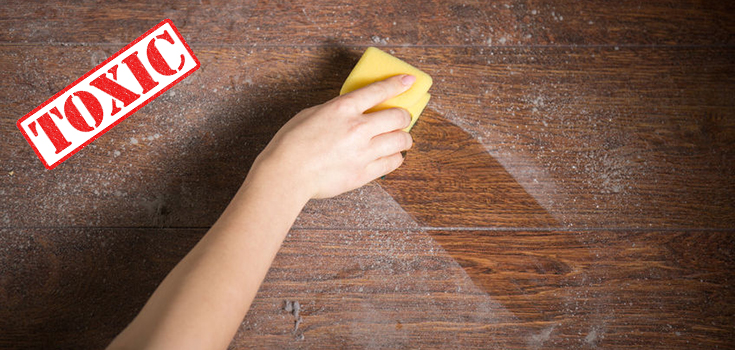Study Finds 90% of Dust Samples from Homes Packed with Toxins
Study Finds 90% of Dust Samples from Homes Packed with Toxins
Many originating from common household products.
Everyone has household dust, and until recently, it was thought to be a low-risk side effect of not being obsessively clean. However, new research has emergedto demonstrate that household dust contains way more toxins than we thought, with most of them coming from everyday products and cleaning supplies.
Samples of dust from homes in 14 states found that there were sometimes as many as 45 toxic chemicals found in standard dust .
Lead author of the study, Ami Zota of George Washington University’s Milken Institute School of Public Health, stated:
“Indoor dust is a reservoir for consumer-product chemicals. Many of the times when these chemicals are added to consumer products, they’re not chemically bound to the products. They can migrate out of the product and into the air or dust.” [1]
While this may not come as a shock to many, it is the first time dust from the home has been analyzed in such a comprehensive manner. The study featured researchers from such high profile institutions as Milken Institute School of Public Health, Silent Spring Institute, Natural Resources Defense Council, Harvard T. H. Chan School of Public Health, and Occupational and Environmental Medicine Program.
Zota says that the study did not examine whether or not the toxins within the dust caused long term health problems, but said the public has a right to be concerned by the new findings.
One chemical, often found in household dust, was the cancer-causing TDCPP. This harmful chemical is found in furniture and baby productsand acts as a flame retardant.
Researchers also found highly fluorinated chemicals such as PFOA and PFOS, which can cause issues with the immune, digestive, developmental, and endocrine systems. These chemicals are often found in nonstick products and waterproof and stain-resistant items. They can also be found in pizza boxes and cell phones.
Zota states that you can really make a difference to your exposure to toxins with the following measures:
Washing your hands and your children’s hands frequently. Small children often put dust-covered fingers and hands in their mouths. Vacuuming carpets frequently using a vacuum cleaner equipped with a HEPA filter, and wet-mopping hard surfaces. Using online consumer tools to buy safer products, such as furniture without flame retardants or stain guard, or toys that are phthalate-free. Opening windows, to allow fresh-air circulation. [1]
One of the best ways to rid your home of these toxins is by choosing more natural-based products, as well as invest in an air purification system for your home. And here are 7 ways to cleanse your body of toxins!
| About Anna Scanlon: | |
| Anna Scanlon is an author of YA and historical fiction and a PhD student at the University of Leicester where she is finishing her degree in modern history. You can find out more about Anna and her books on her lifestyle blog annainwonderland.co.uk. | |
Other Popular Stories:
There are no related stories quite yet.

Post a Comment